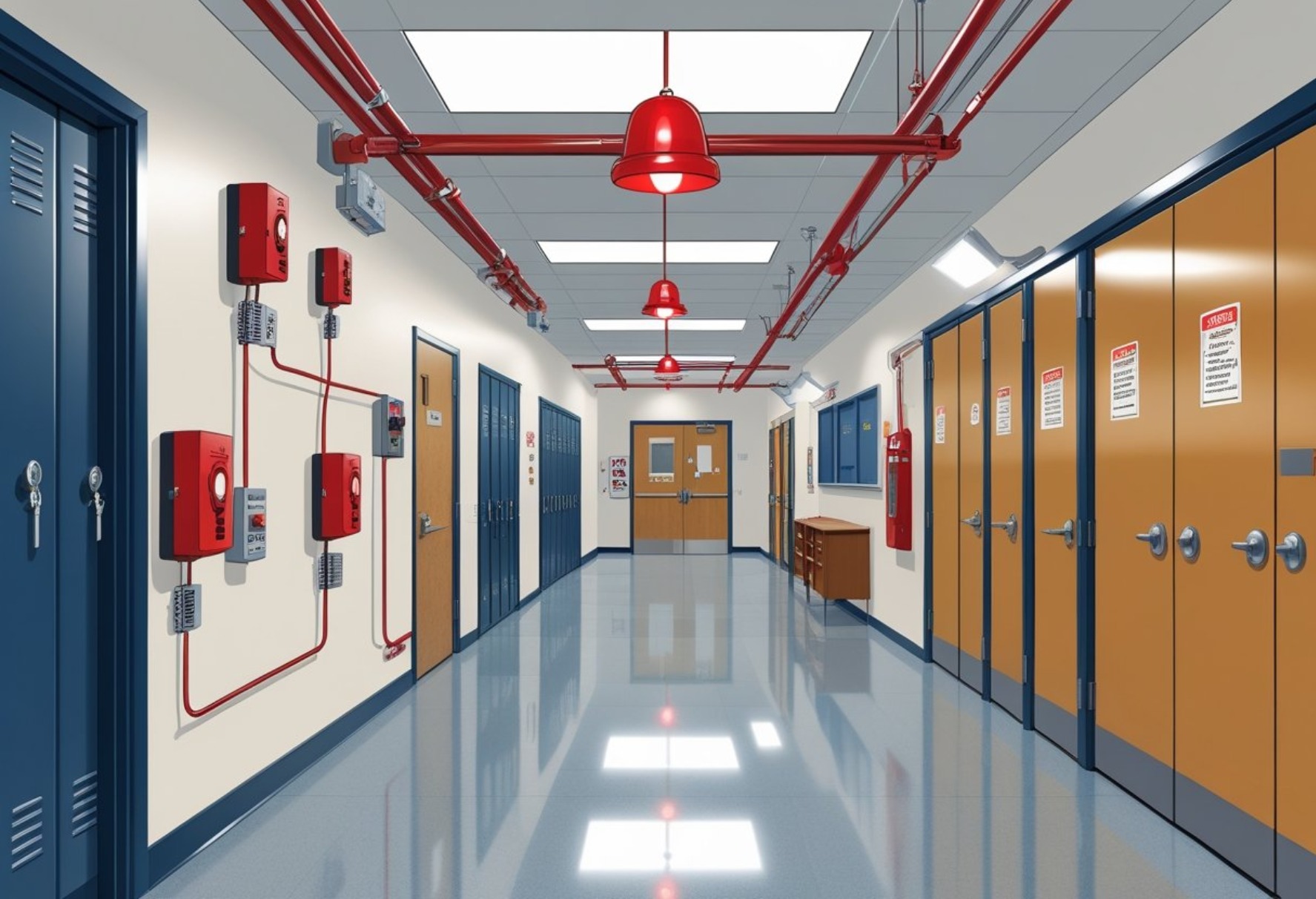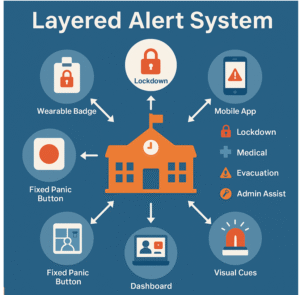Resources

The Complete Guide to Choosing an Alarm System for Schools
Why “Alarm System for Schools” Means More Today
An effective alarm system for schools is no longer just a loud siren or a PA announcement. Today’s campuses require fast, layered, and unambiguous ways to alert the right people—immediately—about the right incident. Whether it’s a medical emergency, lockdown, weather event, or administrative assistance, the system must turn seconds into action. This guide walks through what modern school alarm systems should deliver, how to evaluate them, and how to implement one that fits your district’s or school’s needs.
What a School Alarm System Should Deliver
A contemporary alarm system for schools is an integrated set of tools and protocols that enable staff to:
- Signal quickly with minimal steps—even under stress
- Specify incident type (e.g., lockdown, medical, evacuation, admin assist)
- Reach the right stakeholders simultaneously
- Provide location context to speed response
- Remain reliable even if connectivity or power is disrupted
- Reduce false alarms through intentional design and not blame then on “human error”. These are just traumatizing as real alarms.
- Log events for compliance, training, and improvement
The goal isn’t just “alerts went out”—it’s clear, coordinated action.
Core Components of a School Alarm System
A layered approach works best. Common components include:
- Public Address (PA) & Intercom
- Mass Notification Platforms
- Fixed Panic Buttons
- Wearable Badges or Pendants
- Mobile App Alerts
- Visual Cues (strobes, signage)
- Access Control & Video Integration
- Responder Dashboards
No single component solves everything—it’s how they work together that matters.

Figure 1: A diagram showing components of a layered alarm system
Key Features to Evaluate
When comparing systems, prioritize:
- Speed to signal
- Clarity of alert
- Reliability and redundancy
- Coverage across campus
- Role-based routing and escalation
- False alarm prevention
- Ease of use and training
- Interoperability
- Security and privacy
- Analytics and after-action review
Common Pitfalls to Avoid
- Multi-tap or code-based triggers
- App-only dependence
- Generic “all call” alerts
- One-time training
- Ignoring false alarms (false alarm fatigue)
Compliance & Standards
Systems should support:
- Alyssa’s Law (state-dependent)
- NFPA 72 fire/life safety codes
- ICS/NIMS emergency response frameworks
Compliance is the baseline. Usability under stress is the goal.
Implementation Roadmap
- Campus risk assessment
- Stakeholder working group
- Technology selection and pilot
- Policy and protocol alignment
- Training and onboarding
- Drills and after-action reviews
- Maintenance and lifecycle planning
Budgeting & Total Cost of Ownership
Include hardware, software, installation, training, maintenance, and refresh cycles. Funding may come from district budgets, state grants, foundations, or partnerships. Align proposals with measurable outcomes like reduced response time and fewer false alarms.
Measuring Success
Track KPIs such as:
- Time to alert
- Time to acknowledge
- Time to resolve
- False alarm rate
- Coverage confidence
- Drill performance
Checklist For Selecting a School Alarm System
- Defined incident types and routing
- Rapid activation, ease of use
- Offline functionality
- Clear alert types
- Full campus coverage
- Role-based delivery
- Analytics and reporting
- System interoperability
- Security and privacy alignment
- Staff training plan
- Maintenance strategy
- Funding and success metrics
A clearer Path Forward (and Where SimuAlert ® Fits)
Choosing an alarm system for schools is about designing for human reality. In emergencies, stress is high, and time is short. The system must be fast, clear, and reliable—and reduce confusion, not add to it.
SimulAlert® was built around those principles. Its color-coded, wearable badges allow staff to trigger specific alerts—lockdown, medical, or admin assistance requests—in a single, intentional action, without relying on phones or Wi-Fi. A real-time dashboard gives administrators instant visibility into who signaled, where, and what kind of help is needed. Schools use SimulAlert to lower false alarm rates, shorten response times, and bring clarity to the moments that matter most.
If you’re evaluating alarm systems for your school or district and want to see how a clarity-first design works in practice, we’d be glad to walk you through it. Every second should lead to the right action.
Ready to take the next step in school security?
Click here to schedule a SimulAlert® demo.
Authoritative Resources for Further Reading
To deepen your understanding and strengthen your planning, explore these trusted sources:
- gov – – https://www.schoolsafety.gov
- National Center for Education Statistics (NCES) – https://nces.ed.gov
- S. Department of Education – School Safety – https://www.ed.gov/school-safety
- CISA – K-12 School Security Guide – https://www.cisa.gov/school-safety-and-security
- REMS TA Center – https://rems.ed.gov
- National Association of School Resource Officers (NASRO) – https://nasro.org
- Safe and Sound Schools – https://www.safeandsoundschools.org
- Education Week – School Safety – https://www.edweek.org/collection/school-safety
- National PTA – School Safety – https://www.pta.org/home/family-resources/safety
- K12 Dive – School Safety News – https://www.k12dive.com/topic/safety-security
These resources offer valuable insights, data, and guidance to support your district’s safety strategy and strengthen your grant proposals, board presentations, and community engagement.



